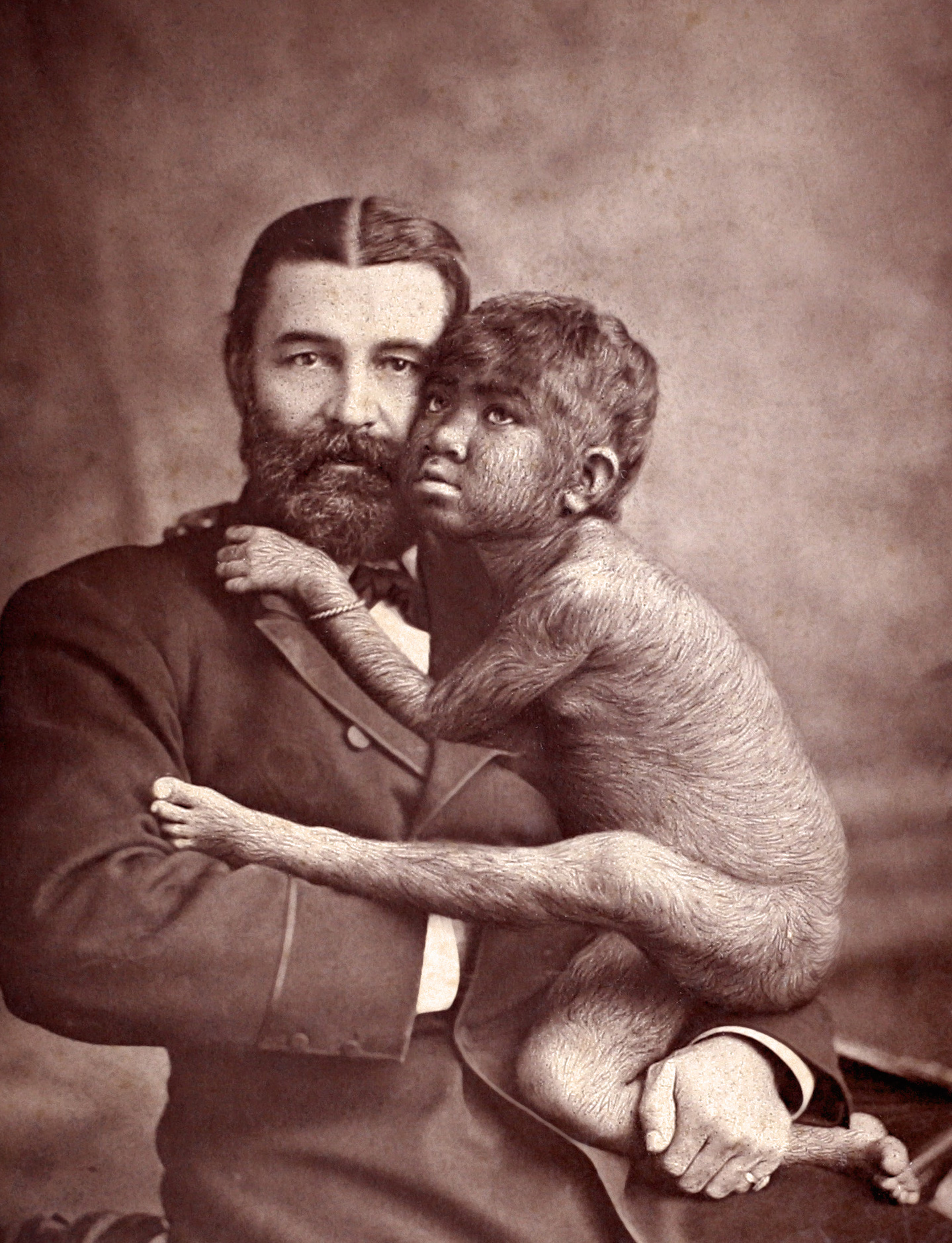|
Eccrine Angiomatous Hamartoma
Eccrine angiomatous hamartoma (EAH), first described by Lotzbeck in 1859, is a rare benign vascular hamartoma characterized histologically by a proliferation of eccrine and vascular components. EAH exists on a spectrum of cutaneous tumors that include eccrine nevus, mucinous eccrine nevus and EAH. Each diagnostic subtype is characterized by an increase in the number as well as size of mature eccrine glands or ducts, with EAH being distinguished by the added vascular component. Patients with EAH may present with complaints of pain or increased sweating (hyperhidrosis) associated with stress or exercise, or without any associated symptoms. It usually appears as a solitary nodular lesion on the acral areas of the extremities, particularly the palms and soles.James, William; Berger, Timothy; Elston, Dirk (2005). ''Andrews' Diseases of the Skin: Clinical Dermatology''. (10th ed.). Saunders. Page 581. . Onset of EAH most commonly arises in children prior to puberty as a solitary, unila ... [...More Info...] [...Related Items...] OR: [Wikipedia] [Google] [Baidu] |
Hamartoma
A hamartoma is a mostly benign, local malformation of cells that resembles a neoplasm of local tissue but is usually due to an overgrowth of multiple aberrant cells, with a basis in a systemic genetic condition, rather than a growth descended from a single mutated cell ( monoclonality), as would typically define a benign neoplasm/tumor. Despite this, many hamartomas are found to have clonal chromosomal aberrations that are acquired through somatic mutations, and on this basis the term ''hamartoma'' is sometimes considered synonymous with neoplasm. Hamartomas are by definition benign, slow-growing or self-limiting, though the underlying condition may still predispose the individual towards malignancies. Hamartomas are usually caused by a genetic syndrome that affects the development cycle of all or at least multiple cells. Many of these conditions are classified as overgrowth syndromes or cancer syndromes. Hamartomas occur in many different parts of the body and are most often as ... [...More Info...] [...Related Items...] OR: [Wikipedia] [Google] [Baidu] |
Eccrine Nevus
An eccrine nevus is an extremely rare cutaneous condition that, histologically, is characterized by an increase in size or number of eccrine Merocrine (or eccrine) is a term used to classify exocrine glands and their secretions in the study of histology. A cell is classified as merocrine if the secretions of that cell are excreted via exocytosis from secretory cells into an epithelia ... secretory coils.Freedberg, et al. (2003). ''Fitzpatrick's Dermatology in General Medicine''. (6th ed.). McGraw-Hill. . See also * Apocrine nevus * Nevus comedonicus * List of cutaneous conditions References External links {{Epidermal-growth-stub Epidermal nevi, neoplasms, and cysts ... [...More Info...] [...Related Items...] OR: [Wikipedia] [Google] [Baidu] |
Hyperhidrosis
Hyperhidrosis is a condition characterized by abnormally increased sweating, in excess of that required for regulation of body temperature. Although primarily a benign physical burden, hyperhidrosis can deteriorate quality of life from a psychological, emotional, and social perspective. In fact, hyperhidrosis almost always leads to psychological as well as physical and social consequences. It is thus responsible for more than ¼ of the cases of social phobia. Patients suffering from it present difficulties in the professional field, more than 80% of patients experience a moderate to severe emotional impact from the disease and half are subject to depression. This excess of sweat happens even if the person is not engaging in tasks that require muscular effort, and it does not depend on the exposure to heat. Common places to sweat can include underarms, face, neck, back, groin, feet, and hands. It has been called by some researchers 'the silent handicap'. Both '' diaphoresis'' and ... [...More Info...] [...Related Items...] OR: [Wikipedia] [Google] [Baidu] |
Hypertrichosis
Hypertrichosis is an abnormal amount of hair growth over the body. The two distinct types of hypertrichosis are generalized hypertrichosis, which occurs over the entire body, and localized hypertrichosis, which is restricted to a certain area. Hypertrichosis can be either congenital (present at birth) or acquired later in life. The excess growth of hair occurs in areas of the skin with the exception of androgen-dependent hair of the pubic area, face, and axillary regions. Several circus sideshow performers in the 19th and early 20th centuries, such as Julia Pastrana, had hypertrichosis. Many of them worked as freaks and were promoted as having distinct human and animal traits. Classification Two methods of classification are used for hypertrichosis. One divides them into either generalized versus localized hypertrichosis, while the other divides them into congenital versus acquired. Congenital Congenital forms of hypertrichosis are caused by genetic mutations, and are ... [...More Info...] [...Related Items...] OR: [Wikipedia] [Google] [Baidu] |
Hyperhidrosis
Hyperhidrosis is a condition characterized by abnormally increased sweating, in excess of that required for regulation of body temperature. Although primarily a benign physical burden, hyperhidrosis can deteriorate quality of life from a psychological, emotional, and social perspective. In fact, hyperhidrosis almost always leads to psychological as well as physical and social consequences. It is thus responsible for more than ¼ of the cases of social phobia. Patients suffering from it present difficulties in the professional field, more than 80% of patients experience a moderate to severe emotional impact from the disease and half are subject to depression. This excess of sweat happens even if the person is not engaging in tasks that require muscular effort, and it does not depend on the exposure to heat. Common places to sweat can include underarms, face, neck, back, groin, feet, and hands. It has been called by some researchers 'the silent handicap'. Both '' diaphoresis'' and ... [...More Info...] [...Related Items...] OR: [Wikipedia] [Google] [Baidu] |
Mesenchyme
Mesenchyme () is a type of loosely organized animal embryonic connective tissue of undifferentiated cells that give rise to most tissues, such as skin, blood or bone. The interactions between mesenchyme and epithelium help to form nearly every organ in the developing embryo. Vertebrates Structure Mesenchyme is characterized morphologically by a prominent ground substance matrix containing a loose aggregate of reticular fibers and unspecialized mesenchymal stem cells. Mesenchymal cells can migrate easily (in contrast to epithelial cells, which lack mobility), are organized into closely adherent sheets, and are polarized in an apical-basal orientation. Development The mesenchyme originates from the mesoderm. From the mesoderm, the mesenchyme appears as an embryologically primitive "soup". This "soup" exists as a combination of the mesenchymal cells plus serous fluid plus the many different tissue proteins. Serous fluid is typically stocked with the many serous elements, su ... [...More Info...] [...Related Items...] OR: [Wikipedia] [Google] [Baidu] |
Acanthosis
The epidermis is the outermost of the three layers that comprise the skin, the inner layers being the dermis and hypodermis. The epidermis layer provides a barrier to infection from environmental pathogens and regulates the amount of water released from the body into the atmosphere through transepidermal water loss. The epidermis is composed of multiple layers of flattened cells that overlie a base layer (stratum basale) composed of columnar cells arranged perpendicularly. The layers of cells develop from stem cells in the basal layer. The human epidermis is a familiar example of epithelium, particularly a stratified squamous epithelium. The word epidermis is derived through Latin , itself and . Something related to or part of the epidermis is termed epidermal. Structure Cellular components The epidermis primarily consists of keratinocytes ( proliferating basal and differentiated suprabasal), which comprise 90% of its cells, but also contains melanocytes, Langerha ... [...More Info...] [...Related Items...] OR: [Wikipedia] [Google] [Baidu] |
Papillomatosis
Papillomatosis of skin is skin surface elevation caused by hyperplasia and enlargement of contiguous dermal papillae.Kumar, Vinay; Fausto, Nelso; Abbas, Abul (2004) ''Robbins & Cotran Pathologic Basis of Disease'' (7th ed.). Saunders. Page 1230. . These papillary projections of the epidermis form an undulating surface under microscopic examination. See also * Skin lesion * Skin disease * List of skin diseases * Papilloma A papilloma (plural papillomas or papillomata) ('' papillo-'' + '' -oma'') is a benign epithelial tumor growing exophytically (outwardly projecting) in nipple-like and often finger-like fronds. In this context, papilla refers to the projection c ... * Laryngeal papillomatosis References External links {{Clinical and histological nomenclature for skin lesions Dermatologic terminology ... [...More Info...] [...Related Items...] OR: [Wikipedia] [Google] [Baidu] |
Eccrine Nevus
An eccrine nevus is an extremely rare cutaneous condition that, histologically, is characterized by an increase in size or number of eccrine Merocrine (or eccrine) is a term used to classify exocrine glands and their secretions in the study of histology. A cell is classified as merocrine if the secretions of that cell are excreted via exocytosis from secretory cells into an epithelia ... secretory coils.Freedberg, et al. (2003). ''Fitzpatrick's Dermatology in General Medicine''. (6th ed.). McGraw-Hill. . See also * Apocrine nevus * Nevus comedonicus * List of cutaneous conditions References External links {{Epidermal-growth-stub Epidermal nevi, neoplasms, and cysts ... [...More Info...] [...Related Items...] OR: [Wikipedia] [Google] [Baidu] |
Tufted Angioma
A tufted angioma (also known as an "Acquired tufted angioma," "Angioblastoma," "Angioblastoma of Nakagawa," "Hypertrophic hemangioma," "Progressive capillary hemangioma," and "Tufted hemangioma") usually develops in infancy or early childhood on the neck and upper trunk, and is an ill-defined, dull red macule with a mottled appearance, varying from 2 to 5 cm in diameter.James, William; Berger, Timothy; Elston, Dirk (2005). ''Andrews' Diseases of the Skin: Clinical Dermatology''. (10th ed.). Saunders. . See also * List of cutaneous conditions *Skin lesion A skin condition, also known as cutaneous condition, is any medical condition that affects the integumentary system—the organ system that encloses the body and includes skin, nails, and related muscle and glands. The major function of th ... References External links Dermal and subcutaneous growths {{Dermal-growth-stub ... [...More Info...] [...Related Items...] OR: [Wikipedia] [Google] [Baidu] |
Glomus Tumor
:''Glomus tumor was also the name formerly (and incorrectly) used for a tumor now called a paraganglioma.'' A glomus tumor (also known as a "solitary glomus tumor," "solid glomus tumor,") is a rare neoplasm arising from the glomus body and mainly found under the nail, on the fingertip or in the foot.Freedberg, et al. (2003). ''Fitzpatrick's Dermatology in General Medicine''. (6th ed.). McGraw-Hill. . They account for less than 2% of all soft tissue tumors. The majority of glomus tumors are benign, but they can also show malignant features. Glomus tumors were first described by Hoyer in 1877 while the first complete clinical description was given by Masson in 1924. Histologically, glomus tumors are made up of an afferent arteriole, anastomotic vessel, and collecting venule. Glomus tumors are modified smooth muscle cells that control the thermoregulatory function of dermal glomus bodies. As stated above, these lesions should not be confused with paragangliomas, which were former ... [...More Info...] [...Related Items...] OR: [Wikipedia] [Google] [Baidu] |
Port-wine Stain
A port-wine stain (''nevus flammeus'') is a discoloration of the human skin caused by a vascular anomaly (a capillary malformation in the skin). They are so named for their coloration, which is similar in color to port wine, a fortified red wine from Portugal. A port-wine stain is a capillary malformation, seen at birth. Port-wine stains persist throughout life. The area of skin affected grows in proportion to general growth. Port-wine stains occur most often on the face but can appear anywhere on the body, particularly on the neck, upper trunk, arms and legs. Early stains are usually flat and pink in appearance. As the child matures, the color may deepen to a dark red or purplish color. In adulthood, thickening of the lesion or the development of small lumps may occur. Port-wine stains may be part of a syndrome such as Sturge–Weber syndrome or Klippel–Trénaunay–Weber syndrome. Types Nevus flammeus may be divided as follows:James, William; Berger, Timothy; Elston, ... [...More Info...] [...Related Items...] OR: [Wikipedia] [Google] [Baidu] |




